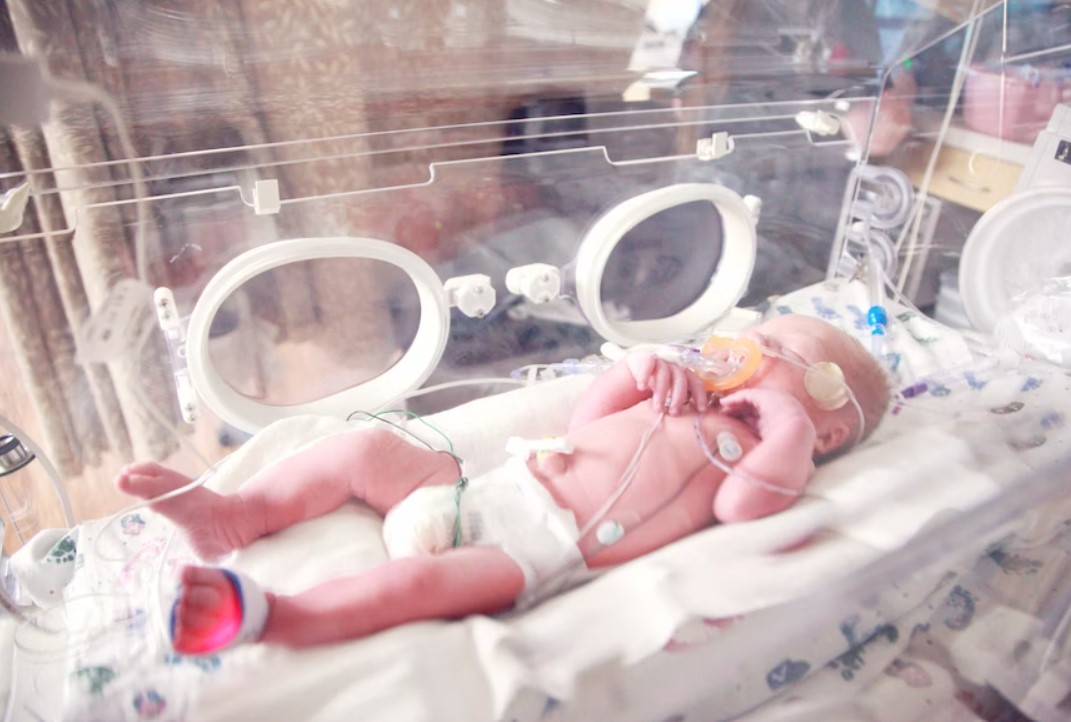Around 200 years back, the first-ever strange account of a “newborn developing a swollen abdomen with greenish then bloody diarrhea, bradycardia, cold extremities, and subsequent death,” was published. Charles Billard described this case, which took place at the Hospital Des Infants Trouves of Paris, France.
The baby’s autopsy revealed that the abdomen was red and swollen, with the mucosa so soft that it could be mashed when scraped with a fingernail. Two centuries later, modern healthcare practitioners know this description to be consistent with a rare neonate condition called Necrotizing Enterocolitis or NEC.
Over the time window of two centuries, doctors have observed certain patterns among NEC victims, mainly that most were pre-term babies, weighed less than 5.5 pounds, and were affected in clusters. According to a study, NEC affects 6 to 15% of the global infant population.
As an expectant mother, you should be aware of this serious condition affecting babies, especially during the first two to six weeks of their lives. Read on as this article discusses this condition in detail.
Most Common Symptoms of the Condition
Necrotizing Enterocolitis, or NEC, is a life-threatening gastrointestinal condition in which a baby’s intestinal tissue is affected. The tissue lining the intestines may swell up due to inflammation or die and shed off. In either of the cases, a hole or perforation is formed in the intestines, which allows bacteria to enter into the bloodstream and the abdomen.
The following symptoms of NEC in babies are the most common:
- Poor feeding tolerance or an inability to digest food
- Swelling of the stomach or bloating
- Discoloration of the stomach, usually reddish or bluish
- Diarrhea, with a gradual change in the color and consistency of the stools. In most cases, blood is clearly visible with the stool.
- Pain upon touching the abdomen
- Vomiting a yellowish-green color liquid
- Lethargy
- Frequent episodes of apnea – a pause in breathing
- Low heart rate
- Inconsistent body temperatures
In severe cases, the baby’s blood pressure may drop, and their pulse may weaken. This happens when the intestines develop a perforation, which allows fluid to fill the cavity. The infant finds it difficult to breathe, requiring a respirator or breathing machine.
Can External Factors Increase a Baby’s Risk for Developing NEC?
Is it possible to predict whether or not a baby will develop Necrotizing Enterocolitis (NEC) immediately after birth? No, but research has found certain factors that increase a baby’s likelihood of developing the disorder.
NEC is typically a condition caused due to certain abnormalities during or after birth. Accordingly, the following factors increase a newborn’s risk of developing the condition:
1. Premature Birth
One of the highest risk factors for developing NEC is premature birth. This would include infants born before 37 weeks of gestation. Some preemies are as young as 28 weeks, whereas others may be 34 weeks before gestation.
The main reason is that premature infants do not have fully developed immune and digestive systems. Their bodies are unable to create the barrier needed to prevent bacterial entry. In the womb, the baby is well-protected, with nutrients supplied through the umbilical cord. In a NICU unit, the infant is vulnerable to debilitating health conditions like the NEC.
2. Low Birth Weight
Very low (less than 3 pounds) and low (less than 5 pounds) birth weight can make the baby weak. Their body will not be able to fight against any early infections and disorders. The lower the baby’s weight, the more vulnerable they become to developing NEC. The most at-risk group are premature babies with very low birth weight.
3. Formula Feeding
Another risk factor that makes babies susceptible to developing NEC is formula-feeding. Studies have not shown a higher incidence of NEC among formula-fed babies. Affected infants’ mothers have even filed lawsuits against formula manufacturers like Mead Johnson and Abbott Laboratories for Enfamil and Similac-related NEC injuries.
According to TorHoerman Law, the lawsuits claim that formula manufacturers hide side effects from helpless parents, even going to the extent of false advertisements just to gain profits. It is believed that human breast milk consists of certain hormones that prevent the growth of harmful bacteria within the baby’s intestines (something which bovine-based formulas lack). This makes formula-fed babies vulnerable to developing serious conditions like NEC.
4. Blood Transfusions
A baby may need a blood transfusion if they’re diagnosed with anemia immediately after birth. During blood transfusions, there is a high possibility of insufficient blood supply to the intestinal cells. This oxygen deprivation will damage the intestinal wall, increasing the chances of developing NEC.
Some researchers believe that the transfusion itself does not cause NEC, but the disease (anemia) could as it cuts off the oxygen supply to different parts of the body.
5. Difficult Birth Experience
In some cases (of full-term normal deliveries), the baby may be deprived of oxygen on its way through the birth canal. Usually, the brain is the organ most sensitive to a lack of oxygen, but the baby’s digestive system may also get affected.
Oxygen deprivation can damage the tissue lining the infant’s intestines, leading to NEC. This is why healthcare providers may suggest a C-section when they suspect a difficult birth experience.
How Dangerous is NEC?
A UK specialist center released a 15-year outcome report for NEC in 2021, where cases were examined between 2000 and 2015. Preemies as young as 28 weeks to 32 weeks were the most affected among the 243 cases examined for the report.
As much as 90% of the affected babies were premature with low birth weight. Their compromised immune systems made them vulnerable to developing this disorder. Researchers reported that out of the affected preemies, there was an 18.9% mortality rate within 30 days of showing the first symptoms.
The most common treatment options for the condition include:
- Gastric Decompression – Under this treatment, a nasogastric tube is inserted to remove contents from the infant’s stomach.
- Parenteral Nutrition – This treatment method involves infusing specialized food through the infant’s vein in an intravenous manner.
- Systemic Antibiotics – These medicines are administered orally, usually in the melted liquid form so the baby can digest them.
- Bowel Rest – The intestines and stomach are given complete rest for healing as nutrients are supplied to the baby’s body intravenously.
- Surgery – This option is often the last resort, necessary to close a perforation in the intestines.
Infants do show improvement with the above-mentioned treatment options, even the extremely premature ones. Once recovered, recurrence can be prevented with the help of antenatal steroids and feeding with breast milk instead of formula.
The Bottom Line
One major reason why the incidence of NEC has increased over the years is the higher number of pre-term survival owing to medical advancements. According to the World Health Organization, 1 in 10 babies are born pre-term, and while at least one such baby dies every 40 seconds, their average survival rate has improved.
However, this is dependent upon the area of their birth and the accessibility to medical facilities. While it is a good sign that medical science has offered a new chance at life for pre-term infants, these little ones’ underdeveloped immune systems make them vulnerable to serious disorders like NEC.
Full-term babes may also develop NEC, especially if they have a weak immune system and low birth weight. If there is one proven (natural) way to prevent this condition in your newborn, it is breast milk.
A 2020 study conducted on 1626 newborns found that human breast milk played a protective role, whereas formula feeding (even mixed feeding) was a risk factor for developing NEC.
In case you cannot breastfeed your baby due to valid limitations, the next best option (at least for the first year) is to buy milk from a lactarium or milk bank. Just ensure the bank you choose collects, processes, and distributes the milk hygienically.





